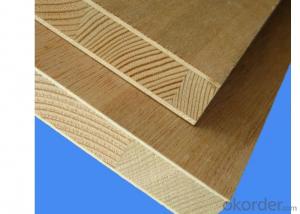Understanding plywood thickness can be a bit of a puzzle, especially when you’re dealing with measurements like 23/32 inches. But fear not, because we’re here to unravel this enigma together. Plywood, as you might know, is a versatile and widely used material in construction, furniture making, and various other applications. It’s made by gluing together multiple layers, or ‘plies’, of wood veneer. The thickness of these layers can vary, and that’s where the confusion often sets in.
Let’s dive into the world of plywood and explore its intricacies. We’ll start with the basics, then move on to the specifics of 23/32-inch plywood, and finally, discuss its applications and how to work with it.
The Basics of Plywood Thickness
Plywood comes in a variety of thicknesses, typically measured in inches or millimeters. The standard thicknesses are usually in 1/8, 1/4, 1/2, 3/4, and 1-inch increments. However, there are also non-standard thicknesses like 23/32 inches, which might seem odd at first but have their own reasons for being used.
The thickness of plywood is crucial for various reasons. It affects the strength, flexibility, and weight of the material. Thicker plywood can support more weight and is often used for structural purposes, while thinner plywood is more flexible and easier to work with for intricate designs.
The Mystery of 23/32 Inches
Now, let’s tackle the main subject: 23/32-inch plywood. This measurement might seem arbitrary, but it’s actually a result of the way plywood is manufactured and sold. Plywood sheets are often sold in standard sizes, such as 4X8 feet, and the thickness is adjusted to meet the needs of specific applications.
23/32-inch plywood is approximately 0.71875 inches thick. It falls between the standard 1/2-inch (0.5 inches) and 3/4-inch (0.75 inches) plywood. This intermediate thickness offers a balance of strength and flexibility, making it suitable for a variety of projects.
Why Choose 23/32-Inch Plywood?
Choosing 23/32-inch plywood can be a strategic decision depending on your project requirements. Here are some reasons why you might opt for this thickness:
– Structural Support: For projects that require a bit more strength than 1/2-inch plywood can provide, but not as much as 3/4-inch, 23/32-inch plywood is a great choice.
– Cost-Effectiveness: It can be more cost-effective than 3/4-inch plywood, especially if you only need a little extra thickness for your project.
– Availability: Sometimes, 23/32-inch plywood is more readily available than other non-standard thicknesses.
– Customization: It allows for a level of customization in projects where the standard thicknesses don’t quite fit the bill.
Applications of 23/32-Inch Plywood
The applications of 23/32-inch plywood are as diverse as its uses. Here are a few examples:
– Furniture Making: It’s perfect for making furniture that requires a balance of strength and ease of handling.
– Subflooring: In some cases, it can be used as a subfloor, providing a stable base for flooring.
– Cabinetry: For cabinet backs and sides, it offers a good balance of strength and cost.
– Signage: It’s sturdy enough for outdoor signs that need to withstand the elements.
– Art Projects: Artists often use plywood for large-scale projects where a bit of extra thickness makes a difference.
Working with 23/32-Inch Plywood
When it comes to working with 23/32-inch plywood, there are a few things to keep in mind:
– Cutting: It’s thicker than 1/2-inch plywood, so you’ll need a sharp blade and possibly a more powerful saw to cut through it cleanly.
– Sanding: Sanding might take a bit longer due to the extra thickness, but it will result in a smoother finish.
– Nailing and Screwing: Make sure to use the right size of nails and screws to accommodate the thickness.
– Finishing: The finishing process is similar to that of other plywood thicknesses, but you might need to apply an extra coat of finish to ensure full coverage.
The Bottom Line
In conclusion, 23/32-inch plywood is a versatile option that offers a middle ground between the more common 1/2-inch and 3/4-inch thicknesses. Whether you’re a professional woodworker, a DIY enthusiast, or an artist, understanding the nuances of plywood thickness can help you make better choices for your projects. So, the next time you’re faced with the decision of which plywood thickness to use, consider the unique benefits of 23/32-inch plywood and how it might just be the perfect fit for your needs.

